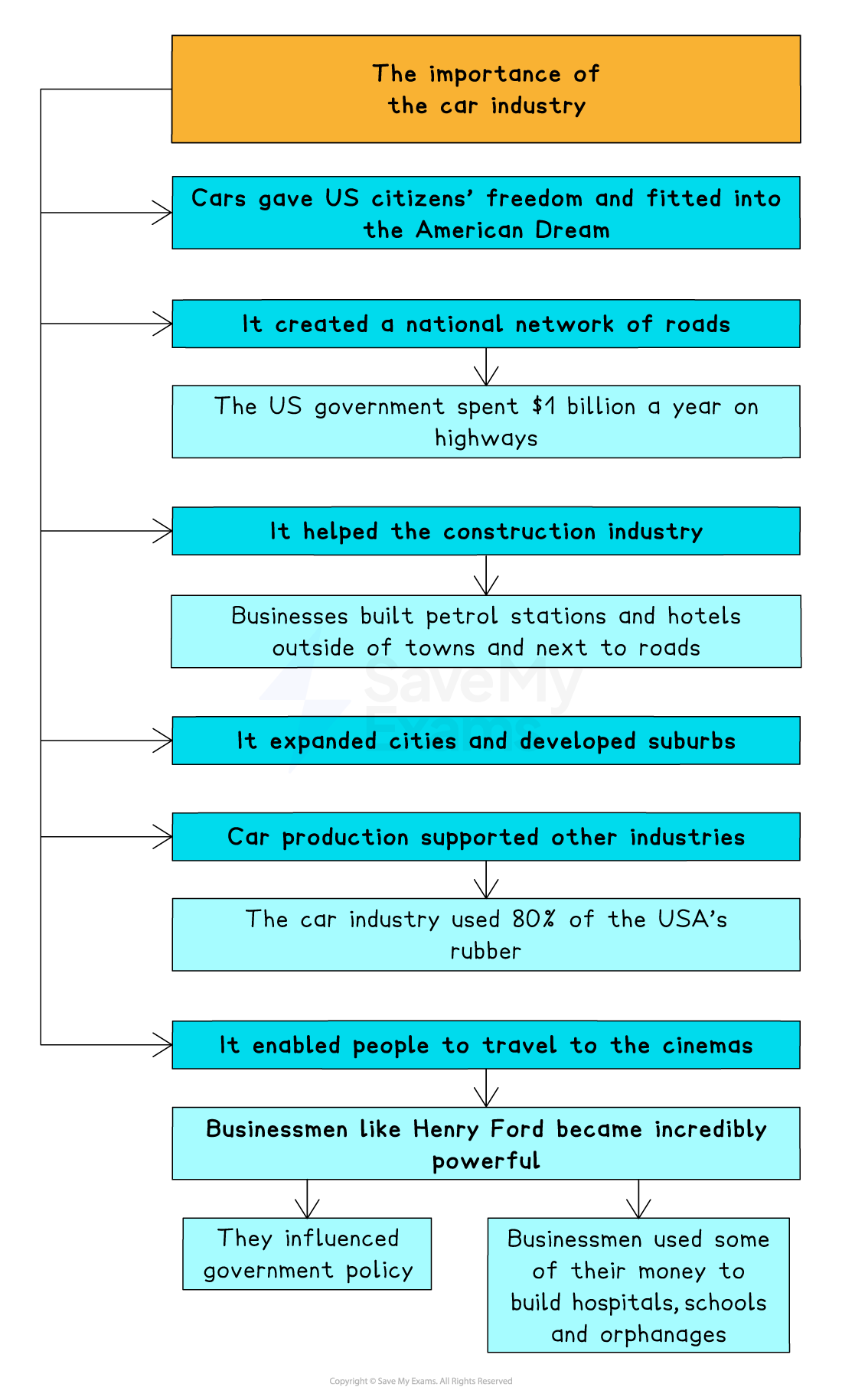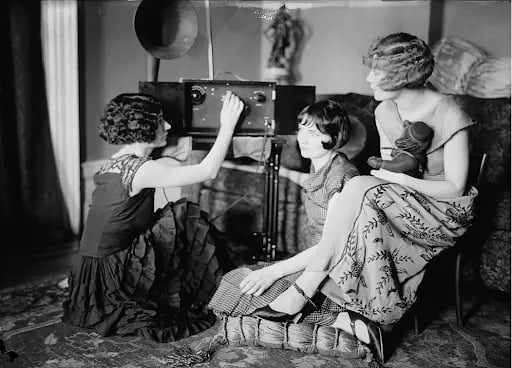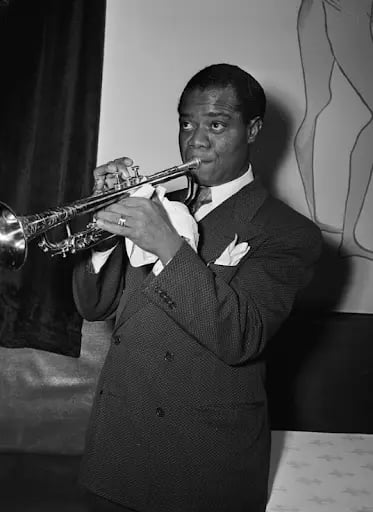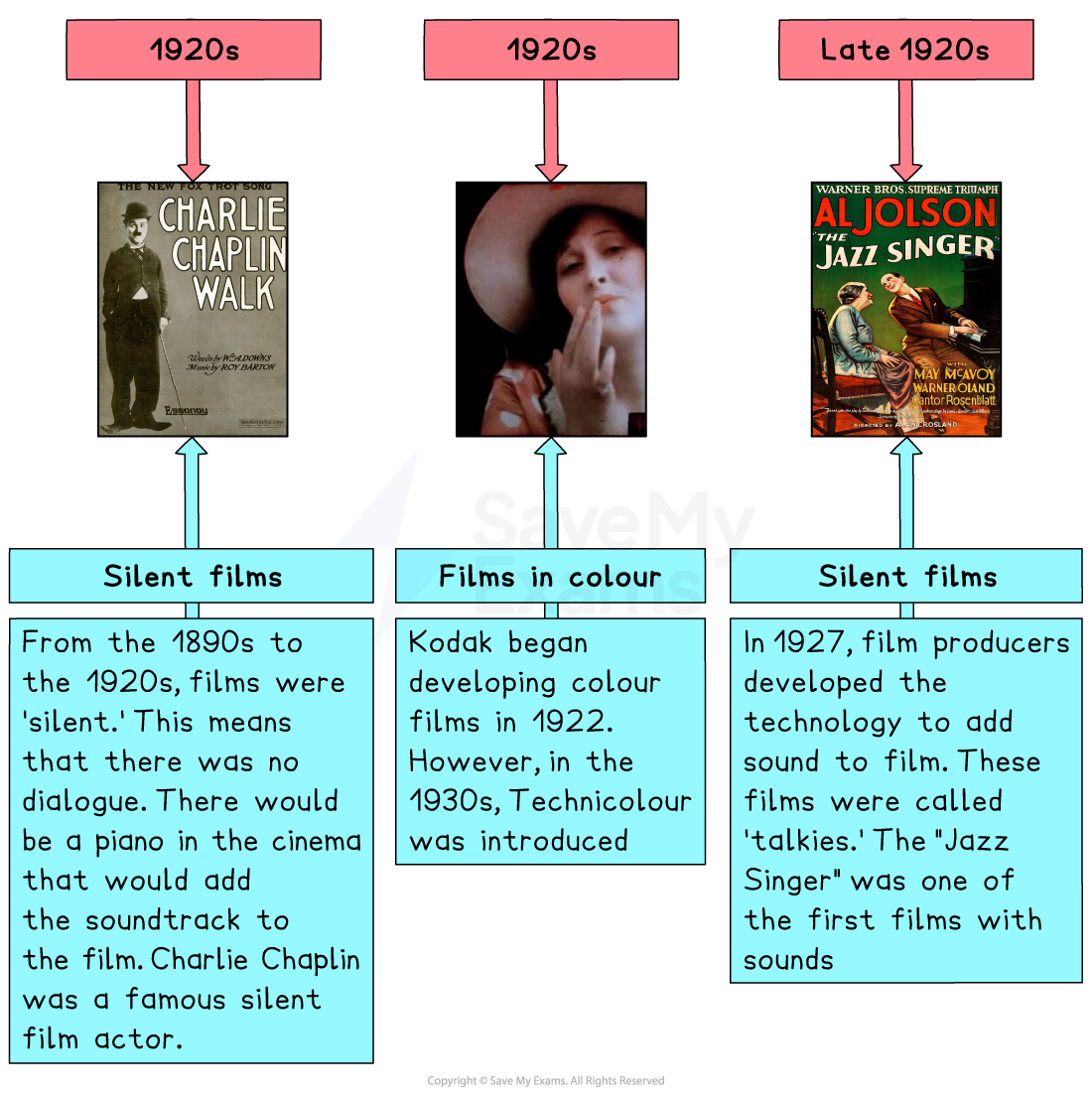What were the ‘Roaring Twenties’? (Cambridge (CIE) IGCSE History): Revision Note
Exam code: 0470 & 0977
Summary
The term “Roaring Twenties” captures the essence of a decade that witnessed enormous and, for many Americans, exciting changes. The booming economy, dramatic increase in car ownership, developments in technology, arts and culture and changes to traditional values led to life in the US becoming unrecognisable from the previous decade. The changes occurred so often and so quickly, it felt like they were roaring past.
What does the “Roaring Twenties” mean?
The Roaring Twenties was a period of rapid cultural, social and economic change in the US during the 1920s.
During the Roaring Twenties, the US experienced rapid economic growth
This was driven by technological innovation, increased consumer spending and government policies
This economic boom led to rising living standards and the emergence of a modern consumer culture
Many more US citizens enjoyed wealth and access to various goods and services
The Roaring Twenties was also a time of social freedom and experimentation
People began to challenge traditional values, and new forms of expression emerged
The decade saw the rise of jazz music and the emergence of new forms of entertainment, such as radio and cinema
Impact of the motor car
The motor car was invented in 1885
Before the First World War, the price of motor cars meant that only the wealthy could afford them
Mass production meant that the car industry grew significantly in the 1920s
By 1929, there were around 23 million cars in the US
The car industry was important for the US for several reasons. For example, it:
Improved the road network
Enabled people to travel further
Supported other industries, due to the parts and materials needed for car production
Led to the expansion of cities and the development of suburbs
Created wealth, particularly for business owners

Impact of the radio
During the 1920s, radio became the most popular entertainment medium in the US
By the end of the 1920s, there were hundreds of radio stations
Radio coverage was able to reach across much of the vast US
There was radio coverage to the smallest and most remote settlements, which meant that:
News travelled more quickly
New and different ideas spread across all of the US
Many people were illiterate in the US in the 1920s
Radio enabled communication to all citizens, regardless of whether they could read and write
Radio improved the day-to-day life of people in the US
Companies sponsored radio programmes or created radio adverts
This contributed to the economic boom of the 1920s, encouraging people to buy new products
Radio encouraged the growth of sport as a hobby
There was radio coverage of live sporting events, such as baseball
People could support teams without having to travel to sporting arenas
By 1929, around 10million homes in the US had a radio

Impact of jazz
Jazz originated from the southern states of the US
It is a high-tempo music that was developed by Black American blues and ragtime musicians
During the 1920s, jazz music became more popular outside of the South
Radios, gramophones and movies helped it to spread right across the US
It was particularly popular with young people, and new dances were developed, such as the Charleston
Some jazz musicians, such as Louis Armstrong, became internationally famous despite the prejudice and discrimination Black Americans suffered during the 1920s

To many older Americans, jazz was the music of drinking, nightclubs and immoral behaviour
Some cities, such as Detroit and New York, banned jazz music because of its association with criminal behaviour
Others objected to it for racist reasons and the fact that it was a Black American art form
Impact of the cinema
The technology of cinema developed significantly during the 1920s, which helped increase its popularity

Television had not been invented in the 1920s, and this decade has become known as the Golden Age of Hollywood
By 1929, Americans were making 110million visits to the cinema every week
There are several reasons why cinema became so popular:
Tickets were cheap, at less than 25 cents
This made it affordable for all social groups to go to the cinema
Cinemas became places where people socialised, and the movies provided a distraction for people who lived tough and mundane lives
Films showed a more glamorous world
People idolised film stars such as Rudolph Valentino and Clara Bow
Picture palaces were warm and comfortable places
There were lots of different types of films, such as:
Romance
Comedy
Cartoons — Mickey the Mouse’s Steamboat Willie was released in 1928
Worked Example
Describe the developments in American society during the Roaring Twenties.
[4 marks]
Answer:
One development was the growth of mass entertainment and media in the form of radio and cinema. The rapid expansion of radio ownership and the increase in the number of radio stations led to the spread in popularity of jazz music and sports.
Another development was the dramatic increase in car ownership. Owning cars meant that people could live further away from their place of work, and this led to the development of the suburbs in most American cities and a completely new way of life.
Examiner Tips and Tricks
When answering four-mark questions, you are awarded a mark for naming a specific and relevant development and another mark for giving detail and explanation of that development. To get four marks, you must name and explain two separate developments.

Unlock more, it's free!
Did this page help you?